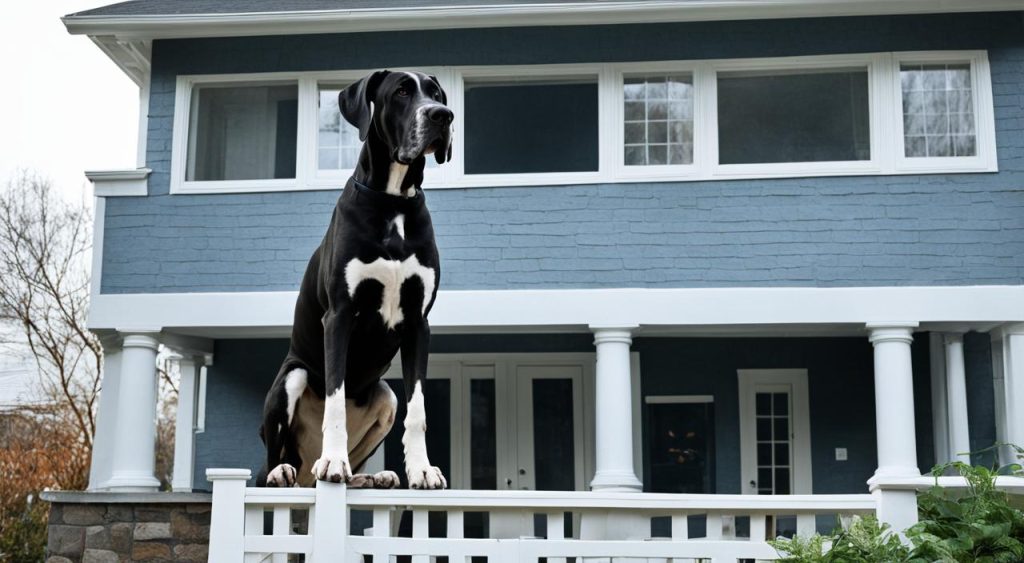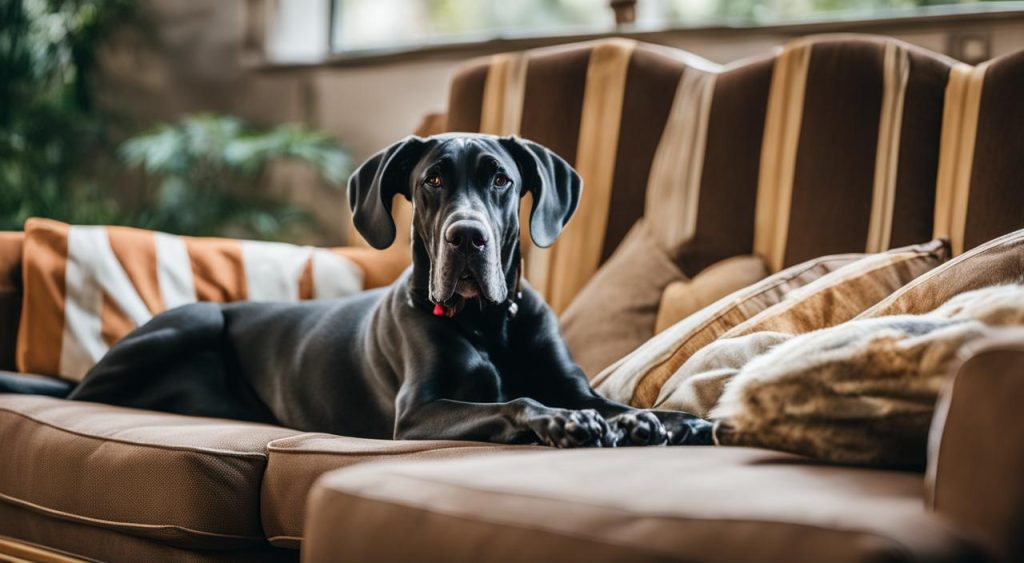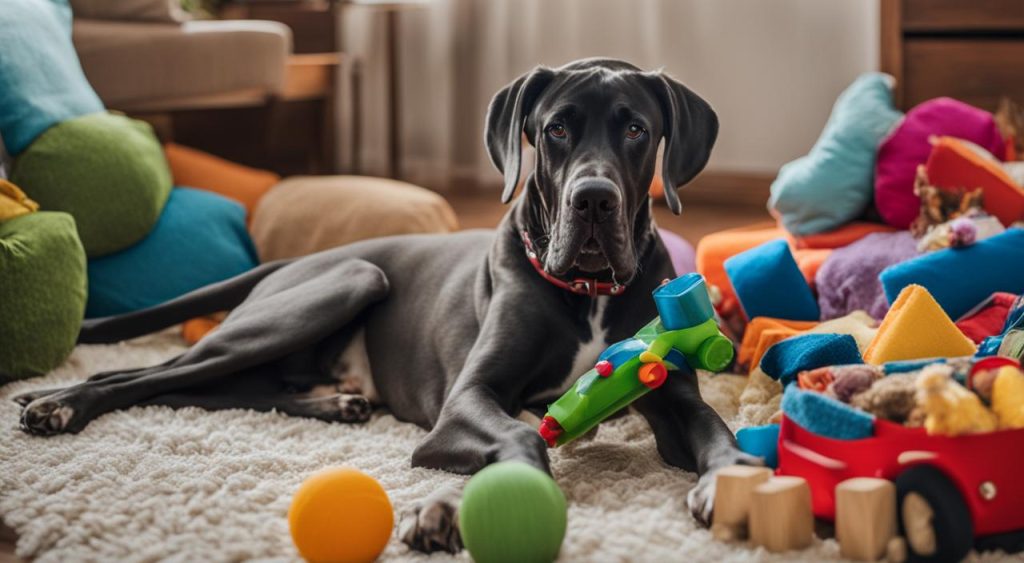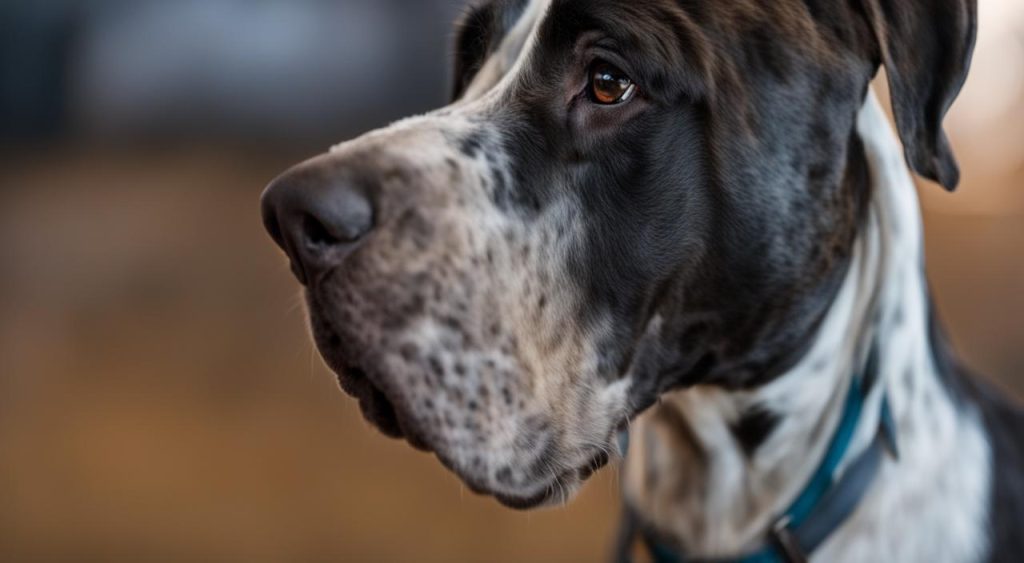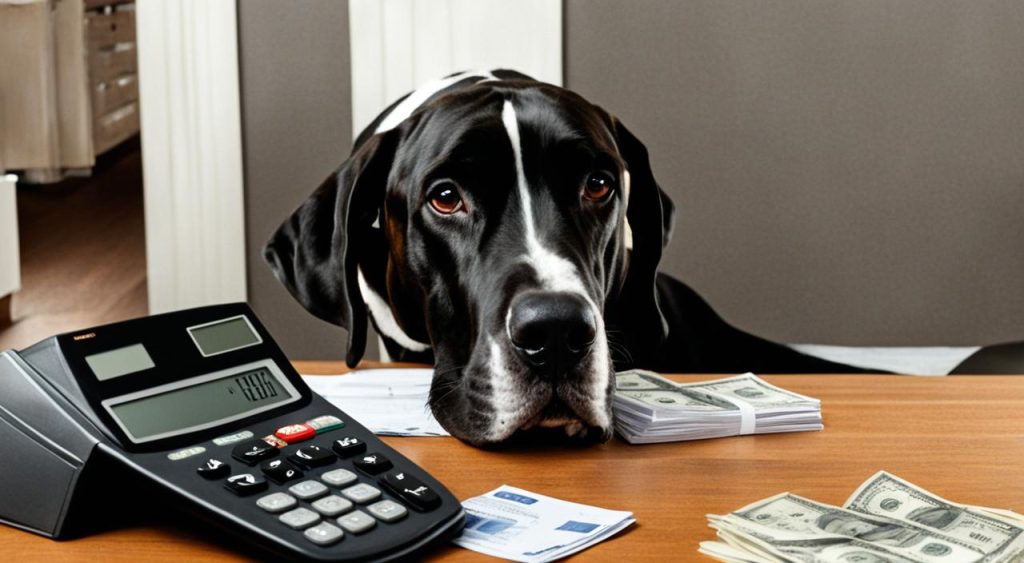Gentle and easygoing, Great Danes are beloved for their majestic appearance and mild temperament. However, owning a Great Dane does come with its fair share of challenges and drawbacks. Before bringing one of these magnificent dogs into your life, it’s essential to consider the potential negative aspects and responsibilities that come with owning a Great Dane.
Firstly, Great Danes require a significant amount of space and companionship. Due to their large size and lively nature, they are not suitable for small apartments or being left alone for extended periods. Additionally, their guarding and territorial instincts can vary, ranging from friendly to standoffish, necessitating frequent socialization to maintain a stable temperament.
Furthermore, Great Danes may display dominant and pushy behavior towards other pets and require obedience training with cheerful methods to accommodate their sensitivity. Their boisterous behavior, combined with their large size, can lead to destructive tendencies, especially during their younger years. Additionally, Great Danes are known for their drooling and slobbering, which some owners may find inconvenient.
Healthwise, Great Danes have a relatively short lifespan and are prone to serious health problems. It’s important to provide them with the necessary veterinary care and attention to ensure their well-being. Lastly, owning a Great Dane may also come with potential legal liabilities due to their size and the public’s perception of these gentle giants.
Key Takeaways:
- Owning a Great Dane requires ample space and companionship.
- They need frequent socialization to maintain a stable temperament.
- Great Danes can be dominant and pushy with other pets, requiring obedience training.
- Their large size and boisterous behavior can result in destructive tendencies.
- Great Danes have a short lifespan and are prone to serious health problems.
Exercise and Space Needs
Great Danes are majestic and beautiful dogs, known for their incredible size and gentle nature. When it comes to exercise, these gentle giants have moderate needs to keep them healthy and happy.
Due to their large size and potential for over-stressed bones and joints, it is crucial to strike a balance in their exercise routine to prevent any potential damage. While they need regular exercise, it is important to avoid excessive strain on their bodies.
Insufficient exercise can lead to boredom and destructive behaviors in Great Danes. They thrive when given ample mental stimulation and physical activity, so it is important to provide them with outlets to burn off their energy.
Despite their size, Great Danes can adapt well to apartment living, as long as they are given enough exercise outside. However, it is important to note that they are primarily indoor dogs. These gentle giants are vulnerable to overheating due to their short coats and limited tolerance to extreme temperatures, so it is crucial to ensure they have regulated temperatures indoors.
Proper exercise and sufficient space to move around are essential for the overall well-being of Great Danes. Providing them with opportunities to run, play, and explore will help keep them physically fit and mentally stimulated.
Training Challenges
Training a Great Dane can pose several challenges, especially as they reach a certain stage of maturity. These intelligent and eager-to-please dogs can also be stubborn and resistant to training, which can make the process more challenging for their owners.
Consistency and positive reinforcement are key when it comes to training Great Danes. This approach works best when started from a young age and maintained throughout their development. By using these methods, you can establish clear boundaries and expectations for your Great Dane.
It is important to note that not all Great Danes have the same personality. Some may exhibit more resistance and stubbornness than others. This means that training techniques may need to be tailored to the individual dog’s needs and temperament.
Early socialization and training are crucial for Great Danes to minimize potential aggression or destructive tendencies. By exposing them to various environments, people, and animals, you can help them develop confidence and good behavior.
Conclusion
Owning a Great Dane can be a rewarding experience, but it comes with its fair share of challenges. These gentle giants make great family pets, but they require specific exercise and space needs. If you live in a small living space without access to outdoor exercise outlets, a Great Dane may not be the best fit for you.
Training a Great Dane can also be demanding. Their intelligence and eagerness to please make them trainable, but they can also be stubborn at times. Consistent and positive reinforcement methods are key to successfully training a Great Dane and ensuring they are well-behaved and obedient.
It’s important to be aware of the potential health issues that Great Danes may face and their shorter lifespan compared to other breeds. Regular veterinary care and attention to their specific needs are crucial in maintaining their overall well-being.
Despite these challenges, for the right owner who can provide the commitment, time, and space, owning a Great Dane can be a wonderful experience. Their affectionate nature and loyal companionship make them a beloved addition to the family.

